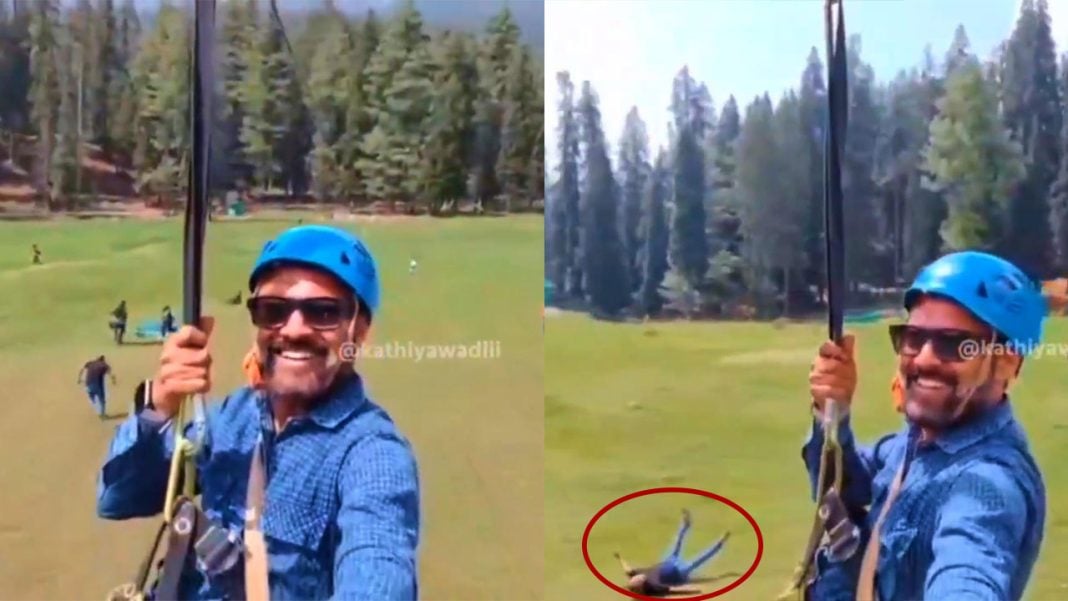On April 22, 2025, a horrific terrorist attack shattered the serene beauty of Baisaran Valley, near Pahalgam in Jammu and Kashmir, leaving 26 dead and over 20 injured. The picturesque meadow, often called “mini Switzerland” for its lush greenery and snow-capped vistas, became a scene of chaos and carnage. Viral videos circulating on social media platforms, including X, have captured the chilling moments of the assault, showing terrified tourists running for their lives as gunshots echo in the background. These haunting visuals have sparked widespread outrage and grief across India and beyond.
The attack, one of the deadliest in the region since the 2008 Mumbai attacks, unfolded around 1:30 PM when five heavily armed militants, reportedly affiliated with The Resistance Front (TRF)—an offshoot of the Pakistan-based Lashkar-e-Taiba (LeT)—emerged from the dense pine forests surrounding Baisaran. The attackers, wielding M4 carbines and AK-47s, targeted male tourists, sparing women and children. Survivors and eyewitnesses reported that the terrorists demanded victims recite Islamic verses like the Kalma or prove their religion, executing those identified as non-Muslims, predominantly Hindus. One local Muslim, Syed Adil Hussain Shah, was killed while attempting to intervene.
A particularly harrowing video, shared widely on X, captures the initial moments of the attack. Filmed by a tourist strolling through the meadow, the footage begins with tranquil scenes of Baisaran’s beauty but is abruptly interrupted by gunfire and screams. The man recording can be heard saying, “A terrorist attack has taken place here… we escaped narrowly… God will protect us,” as he flees. Another clip, posted by multiple X users, shows people scrambling in panic, some collapsing after being shot, with no immediate rescue in sight. The footage underscores the attack’s brutality and the vulnerability of the remote location, accessible only by foot or pony, which delayed security forces’ response by at least 40 minutes.
Among the victims were a Navy officer, Lieutenant Vinay Narwal, on his honeymoon just four days after his wedding, an Intelligence Bureau officer, Manish Ranjan, and a US-based TCS techie, Bitan Adhikari, vacationing with his family. Heart-wrenching accounts from survivors paint a grim picture. Asavari Jagdale from Pune recounted how her father was shot after failing to recite an Islamic verse. Pallavi from Karnataka, whose husband Manjunath Rao was killed, recalled a terrorist saying, “Go tell this to Modi,” sparing her life. Shubham Dwivedi, a newlywed from Kanpur, was executed after failing to recite the Kalma while eating Maggi with his wife.
The Resistance Front initially claimed responsibility, citing opposition to Indian policies allowing non-Kashmiris to settle in the region. However, they retracted the claim four days later, alleging a “communications breach” and accusing Indian intelligence of involvement—a move some reports suggest was influenced by Pakistan’s military leadership. Indian authorities have identified LeT commander Saifullah Kasuri as the mastermind, with sketches released of three suspects: Asif Fuji, Suleman Shah, and Abu Talha. Five terrorist-linked properties have since been demolished in retaliation.
The attack has escalated India-Pakistan tensions, prompting India to suspend the Indus Waters Treaty, expel Pakistani diplomats, and close borders. Prime Minister Narendra Modi cut short his Saudi Arabia visit to chair a Cabinet Committee on Security meeting, vowing severe punishment for the perpetrators. Protests erupted outside Pakistan’s High Commission in Delhi, with demands to designate Pakistan a state sponsor of terrorism.
As the nation grieves, the viral videos serve as a stark reminder of the attack’s human toll. Images of a young woman cradling her dying husband and families mourning loved ones have become symbols of the tragedy. While security forces continue their manhunt in the sealed-off region, the scars left on Pahalgam’s idyllic meadows will linger, as will the calls for justice.





